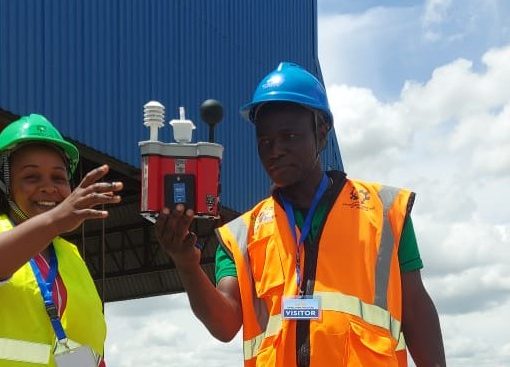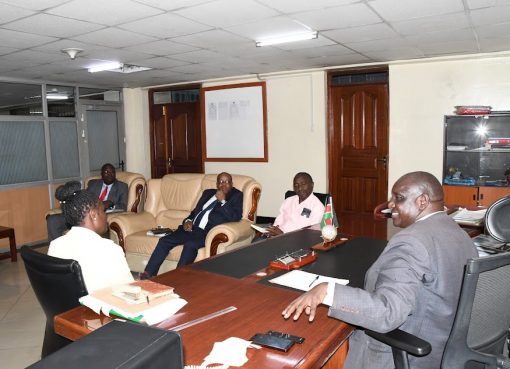Years back at an international gemstone fair in Europe, a veteran buyer drawn by a unique green stone displayed in one of the stands was perplexed to see the tag indicating the expensive stone had originated from a country in North America.
After further probe, it emerged the gemstone had come from Tsavo mining fields in Kenya. The unscrupulous foreign dealer after buying the gemstone from a poor artisanal miner had polished it and attempted to pass it off as a product of his native country.
“Such fraud exists. You find very valuable gemstones from local mines are sometimes presented to unsuspecting international buyers as products of the country the seller comes from. This fraud robs Kenya the right to be recognized as a gem-producing nation,” says Rev. David Zowe, County chair of Taita-Taveta Artisanal Miners Association.
Taita-Taveta County is a renowned bedrock of minerals with potential to transform the region’s economic fortunes. From vast deposits of iron ore at Kishushe village in Wundanyi, Manganese in Maribenyi village in Mwatate to Graphite in several ranches in Voi sub-county, these natural resources have barely been exploited.
However, the gemstone, more than any other mineral, has conferred a truly unique identity to this border county.
“We have rare gemstones like the Tsavorite that are not found elsewhere,” explains Rev. Zowe.
Other precious stones mined across several areas in the county include Rubies, Sapphires, Emeralds, Garnets and Tourmalines.
Unlike other minerals that are sold and bought in bulk, gemstones present an exceptional challenge. Their small sizes implies ease of portability thus making it virtually impossible to trace their movements.
Buyers are known to traipse the streets of Voi town with gemstones worth millions in their pockets. Deals worth tens of millions are crafted and sealed in hotel rooms or in a buyer’s car without attracting any attention. Such challenges make it hard for the government to get its share of revenue from such sales because they are neither documented nor reported.
Out of this dearth of proper documentation, Kenya-mined gemstones run the grave risk of being smuggled outside the county. Once there, crooked dealers package them and sell them as gemstones from those countries. This identity theft is damaging to Kenya’s brand in the international gemstones market.
However, current efforts by the government through the Ministry of Mining and Petroleum to introduce Block Chain Technology program in the artisanal mining sector promises to bring sanity in this high-risk business and combat rampant fraud.
Block chain technology entails painstaking mapping and documentation of individual precious stones produced in the region. This is to enhance traceability that will allow international buyers to trace back the exact origin of each gemstone from anywhere across the globe.
Mr. David Irungu, the Regional Mining Officer in Taita-Taveta County, says the technology is expected to bolster mining operations and empower artisanal miners by ensuring they receive value for their gemstones.
He explains that such technology will make it impossible for fraud involving gemstone identity theft to thrive in international markets.
“Each gemstone will be properly documented with all its unique features listed. This means that even if it is sold internationally, it can be traced back to the specific mine it was extracted from,” he explained.
Apart from strengthening the traceability network of a gemstone, the technology is also intended to shield Kenya’s brand at international markets. Gemstones from Kenya will continue to have an absolute and unique local identity that can never be appropriated by foreigners even after value addition.
While all gemstones might look relatively uniform with just a few variations based on color and size, experts say each stone is as different as it is distinctive. Mr. Irungu explains that each gemstone has uniqueness from its own gemological formation. Such uniqueness sets each stone apart from the other.
“The uniqueness of each gemstone is based on 4Cs; that is the color, cut, clarity and carat. These are the key features of any stone,” he explained.
The block chain technology will capture the 4Cs of gemstones from mines in the region and allow for creation of a gemstone database on production trends, marketing patterns and revenue streams. The database will also make it easier for government and other stakeholders to design relevant interventions to boost artisanal miners.
Mr. Irungu says gem identity is also a key attraction for wealthy buyers in the international market who pride themselves in collecting mementos from across the world.
“Buyers who pride themselves in having collectables from around the world will have the intrinsic satisfaction of knowing a stone in their collection came from a specific mine in a rural Kenyan village,” he said.
Deputy Governor Majala Mlaghui says empowerment of artisanal miners is the key to unlocking the mining potential in the region. She hailed the block chain technology as an additional intervention to promote the artisanal mining sector that has employed thousands.
“Traceability is part of protecting local mining brands. Each stone by our miners will retain its special identity even when sold to buyers elsewhere,” she said.
A fortnight ago, Moyo Gems, a gemstone-dealing agency from Tanzania collaborated with the County government to launch its inaugural gemstone-buying fair directly from actors in the artisanal mining sector.
To protect the local gemstone brand, the agency is utilizing block chain technology to capture details including unique features of individual stone, miner’s particulars, mining location amongst others are listed.
Moyo Gems has major buyers representing international brands who are keen to source for gemstones from the region. Considered as a leading player in the gemstone market, Moyo Gem’s entry into Tanzania artisanal mining sector in 2019 saw miners receive over four times the value of their minerals by eliminating exploitative brokers. This is the feat the agency is trying to replicate in Kenya.
Ms. Mlaghui says 300 artisanal miners were extensively trained on mineral types and identification to equip them with adequate knowledge to help them navigate the gemstone trade. Organizations involved in this training include Pact International and Association of Women in Extractives and Energy in Kenya (AWEIK).
“The 300 miners got training on critical aspects of mining. We are happy that over half of them are women. This is the right step towards empowering them,” she said.
Moyo Gems toured Mkuki mines in Mwatate to engage miners from Chawia, Chungaunga, Kabanga and Alia. It later went to Kasighau mines and had the last gem buying-session at Voi Gemology Center.
“We hope to have these markets on a quarterly basis based on prevailing circumstances. This is how we intend to promote the value of gemstones for our miners,” she said.
She asked the national government to fast track the commissioning of Voi Gemology Center to promote the sales and packaging of precious stones by artisanal miners in the region.
By Wagema Mwangi





